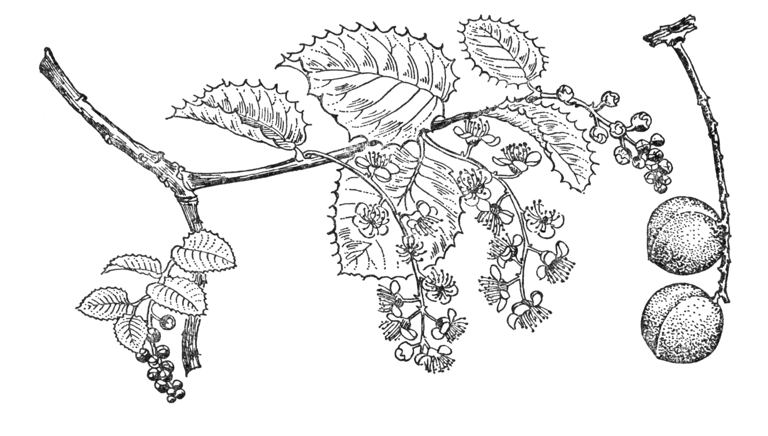An evergreen shrub of compact habit; branchlets glabrous. Leaves ovate, 1 to 2 in. long, 3⁄4 to 11⁄4 in wide; rounded or slightly heart-shaped at the base, sharply toothed, the hollows between the teeth wide and rounded, dark glossy green, glabrous on both surfaces. Flowers in racemes 11⁄2 to 3 in. long, produced in summer; each flower 1⁄3 in. across, white, on a stalk 1⁄6 in. long. Fruits roundish, but slightly pointed at the end, 1⁄2 in. in diameter, changing to red, then black-purple.
Native of California, and too tender to be of much value in any but the mildest parts of the British Isles as a shrub for the open ground. But on a sunny wall it should survive all but the hardest winters once it is established and flower well, at least in warm summers. Closely related to this species is:
P. lyonii (Eastw.) Sarg. Cerasus lyonii Eastw.; P. integrifolia Sarg., not Walp.; P. ilicifolia var. occidentalis (Nutt.) Brandegee – This grows taller than P. ilicifolia and has almost entire leaves, racemes up to 5 in. long and dark fruits. Native of several islands off the coast of California, including Sta Catalina.
P. caroliniana (Mill.) Ait. Padus caroliniana Mill. – Another N. American cherry laurel and equally tender. Loudon states that in 1833 there was a bush 10 ft high at Swallowfield in Hampshire, but this is very doubtful. It was probably some form of common cherry laurel, wrongly named. P. caroliniana has entire leaves 3 to 41⁄2 in. long, oblong-lanceolate; flowers creamy white, in short racemes; and black, shining, oblong fruit, 1⁄2 in. long. A native of S.E. United States, where it is used, much as the common laurel is here, to make hedges. Originally introduced in 1759, and many times since, it has never long survived, unless it be in some of the south-western counties.


